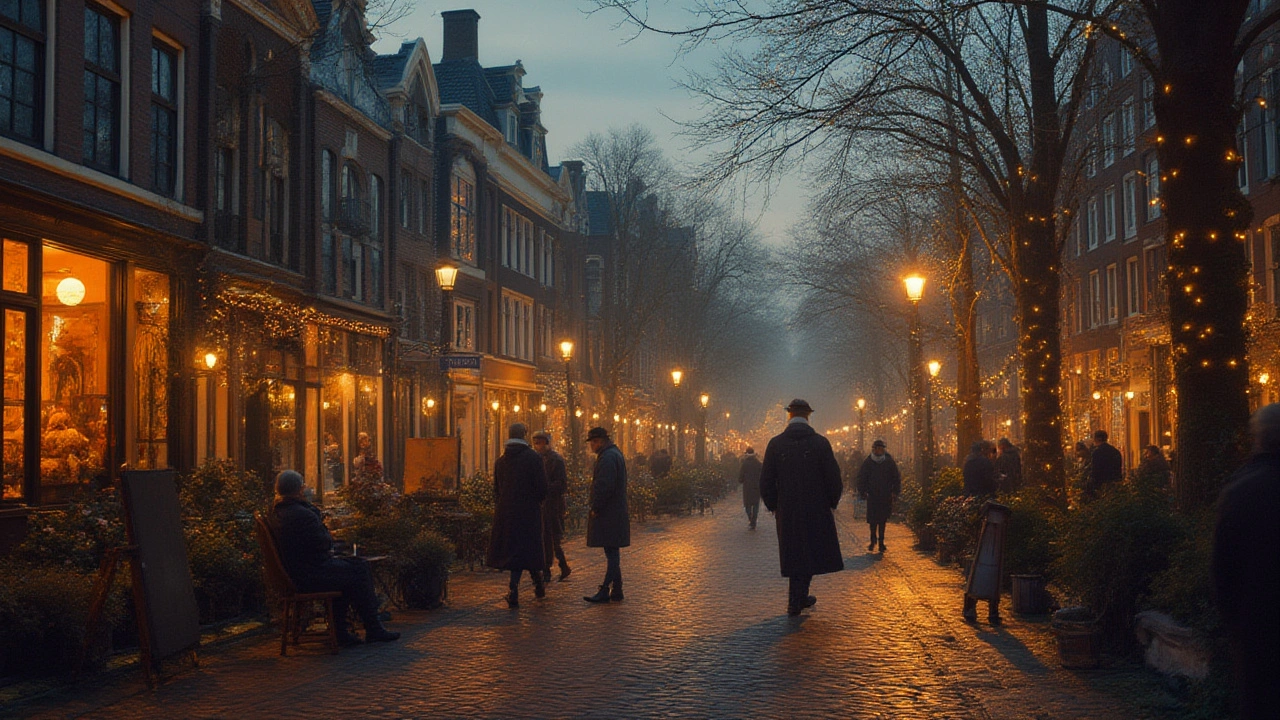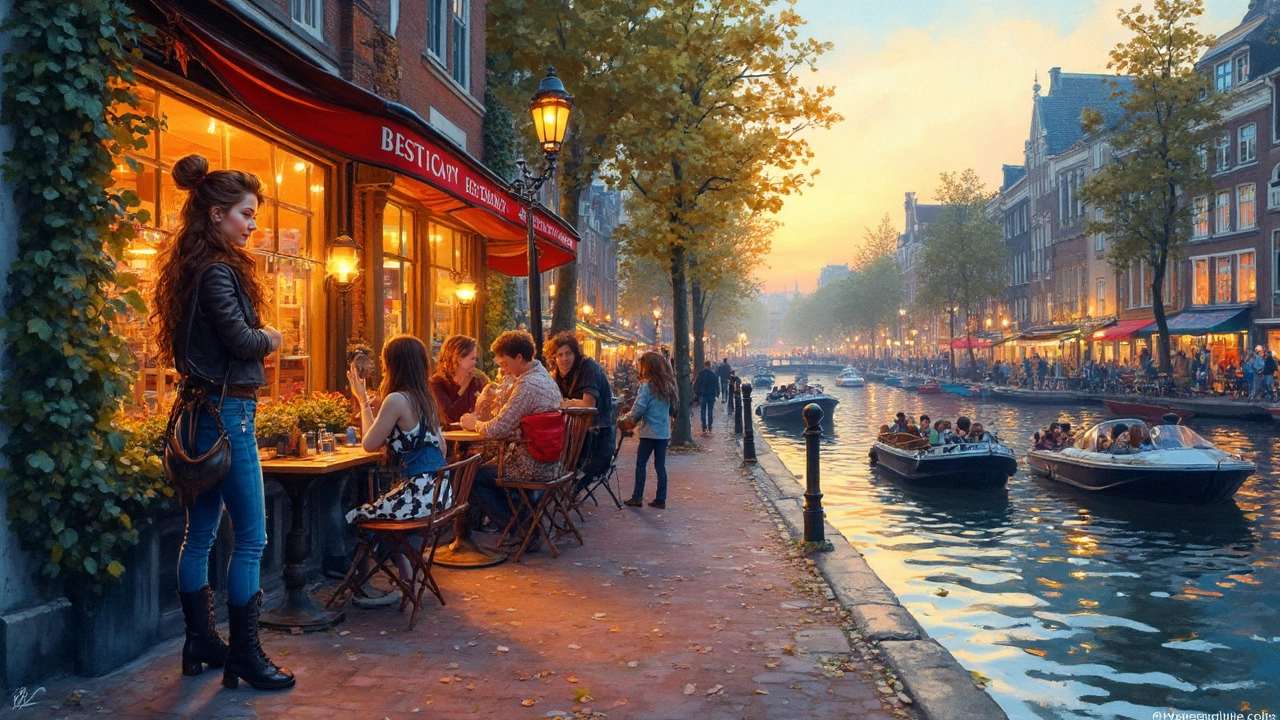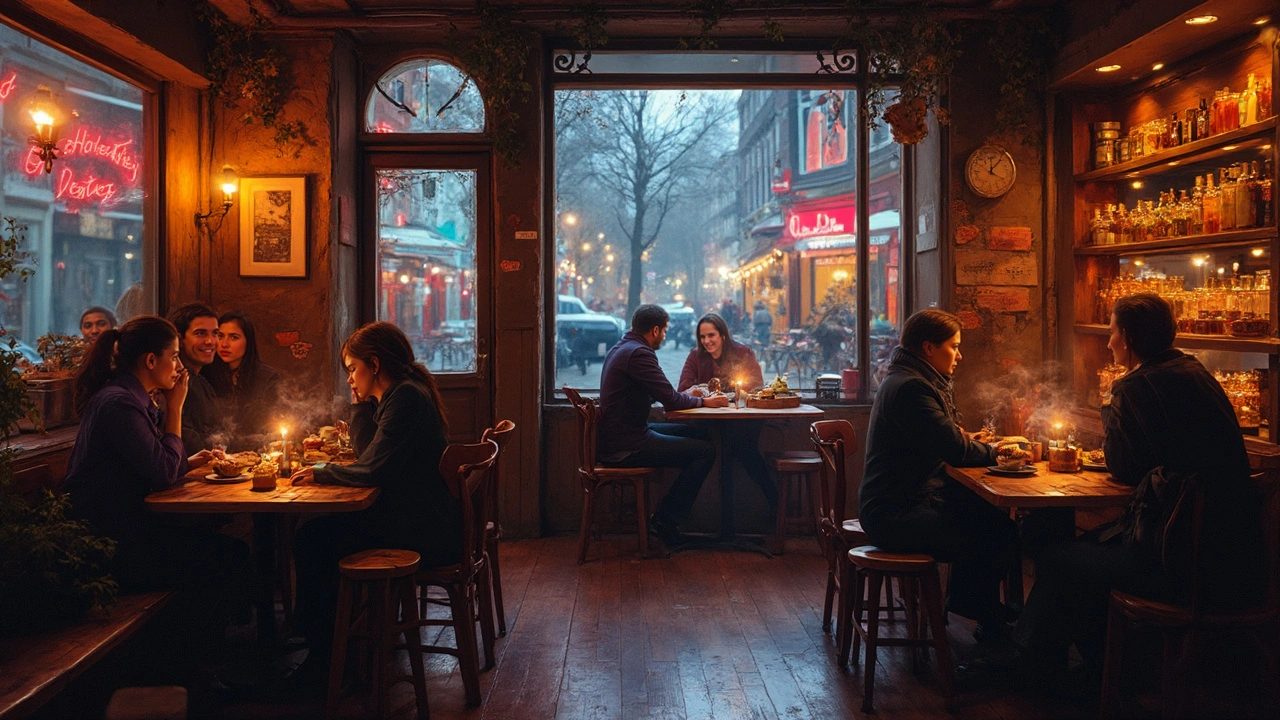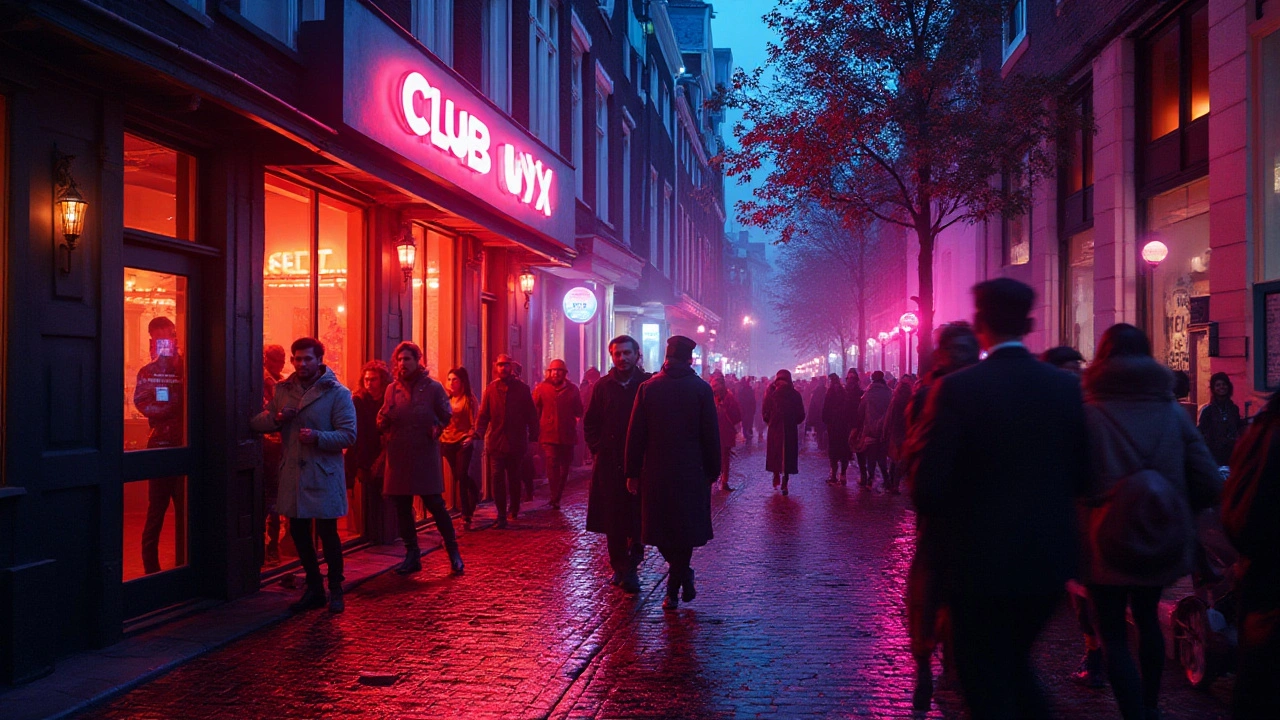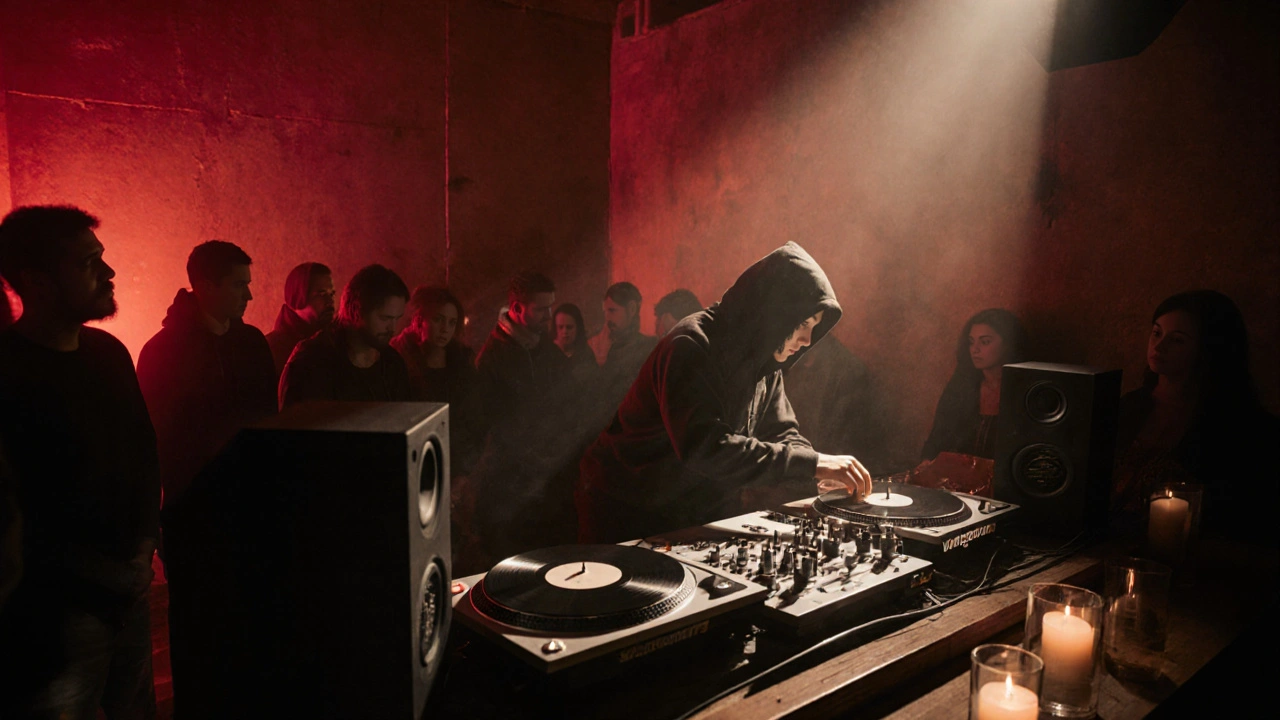
In Amsterdam, where the canals reflect neon lights and the air hums with bass from open windows, few venues hold the same quiet reverence as Westerunie Nightclub. Tucked away near the Amstel River, just a ten-minute walk from Amsterdam Centraal, it doesn’t scream for attention like the Red Light District’s flashy clubs. Instead, it waits-patient, dark, and deep-until the right kind of night arrives. And when it does, the city’s most dedicated music lovers show up, not to be seen, but to feel.
How Westerunie Became Amsterdam’s Secret Sound Temple
Westerunie opened in 2018, a time when Amsterdam’s club scene was shifting. Big-name DJs were pulling crowds to De School and Shelter, but a quieter movement was brewing. A group of local producers and collectors-many of whom had cut their teeth in underground parties in the Jordaan or at De Marktkantine-wanted a space that prioritized sound over spectacle. They found an old warehouse near the Amstel, stripped it down to concrete and steel, installed a Funktion-One system salvaged from a closed Berlin club, and lit it with nothing but dim red bulbs and candlelight.
There’s no VIP section. No bottle service. No cover charge before midnight. You pay €10 at the door, get a wristband, and walk in. The first thing you notice isn’t the crowd-it’s the silence. Then, the bass hits. Not loud. Not aggressive. Just deep, warm, and perfectly tuned. That’s the Westerunie sound: Dutch house with soul, techno with groove, and always, always, a little bit of melancholy.
The DJs Who Shape the Night
The magic of Westerunie doesn’t come from flashy visuals or celebrity names. It comes from the DJs who treat the booth like a sacred space. Three names keep returning: Jan Klaassen, Meike van Dijk, and Tommy Rietveld.
Jan Klaassen, 42, started spinning in 2005 at De Pijp’s now-closed Café de Klos. He still uses vinyl only. His sets are slow burns-three-hour journeys that begin with obscure 1980s Dutch synth-pop, slide into Berlin-style minimal techno, and end with a 1997 remix of a Dutch folk song he found on a dusty cassette in a flea market near Waterlooplein. He doesn’t post his sets online. “If you want to hear it,” he says, “you have to be here.”
Meike van Dijk, 31, is the only woman regularly booked at Westerunie. She’s a sound engineer by day at the Amsterdam University of the Arts and produces under the alias “M. V. D.” Her sets are rhythmic, layered, and precise. She uses field recordings from Amsterdam’s canals-water lapping against boats, tram bells near the Nieuwmarkt, even the distant chime of the Westerkerk bell-and weaves them into her tracks. One night last winter, she played a 45-minute loop of rain hitting the roof of the Westerkerk, layered over a slow bassline. People stood still. No one moved. No one spoke.
Tommy Rietveld, 28, is the youngest of the trio. He grew up in Haarlem, where his father ran a secondhand record shop. He started collecting Dutch disco and post-punk as a teen. His sets are unpredictable-jumps from 1970s Rotterdam funk to acid house, then back to a 1992 remix of a Dutch pop hit by the band The Gathering. He doesn’t use playlists. He brings three crates of records each night and picks by feel. “The room tells me what to play,” he says. “The energy here is different than anywhere else in Amsterdam.”
Why Westerunie Feels Like Amsterdam Itself
Amsterdam isn’t just about tulips, bicycles, and coffee shops. It’s also about quiet resistance. About finding beauty in the overlooked. About respecting space, sound, and silence. Westerunie mirrors that.
There’s no flashing logo on the wall. No Instagrammable mural. No branded cocktails. The bar serves only beer-Amstel, Heineken, and a few local craft brews like De Molen’s ‘Brouwerij van de Pijp’-and wine from the Rhine Valley. The ice is hand-chipped. The glasses are thick, unpolished, and heavy. You don’t come here to post. You come here to disappear.
And the crowd? It’s a mix. Students from UvA with backpacks still slung over their shoulders. Retired sailors who’ve been coming since 2019. Expats from Berlin and London who moved here just to be near this place. A couple from Antwerp who drive over every Friday. A woman in her 60s who comes every third Thursday with her husband. They sit in the back corner, sipping red wine, nodding slowly. No one asks who they are. No one needs to.

What Happens When the Lights Come On
Westerunie closes at 4 a.m. sharp. No extensions. No last call. At 3:55, the lights flicker on-soft, yellow, like dawn breaking over the Amstel. The music fades into silence. People don’t rush out. They linger. Some light cigarettes on the sidewalk. Others stand still, eyes closed, letting the night settle into their bones.
By 5 a.m., the street cleaners arrive. The first trams roll past. The scent of fresh stroopwafels drifts from a nearby bakery on the Prinsengracht. And somewhere, in a quiet apartment near the Jordaan, one of the DJs is already asleep, headphones still on, the last track still humming in their dreams.
How to Experience Westerunie Like a Local
- Go on a Thursday or Saturday. Those are the nights the core DJs play. Friday is often guest selectors.
- Arrive after midnight. The vibe doesn’t fully wake up until 1 a.m.
- Wear dark clothes. No neon. No logos. This isn’t a fashion show.
- Bring cash. Card machines are turned off after 1 a.m.
- Don’t take photos. The staff will politely ask you to stop. It’s not about being rude-it’s about preserving the space.
- Walk or bike. The nearest parking is 15 minutes away. The walk from Centraal or the Jordaan is part of the ritual.
If you’re new to Amsterdam’s underground scene, start with a night at Westerunie before you hit the bigger clubs. It’ll change how you hear music here. And maybe, just maybe, how you hear the city.

What Comes After Westerunie
There’s no afterparty at Westerunie. But if you’re still awake, head to De Bar on the Lijnbaansgracht. It opens at 4 a.m. and serves warm spiced wine and bitterballen. Or walk to the Amstel River and sit on the bench near the Oudezijds Achterburgwal. Watch the first boats glide by. Listen to the water. The night doesn’t end here-it just changes shape.
Is Westerunie open every weekend?
No. Westerunie operates on a rotating schedule, usually open Thursday, Friday, and Saturday nights. They take breaks in January and August. The full calendar is posted every month on their Instagram @westerunie.amsterdam-no website, no email list. If you’re not following them, you’ll miss it.
Do I need to know Dutch to enjoy Westerunie?
Not at all. Most people there speak English, but the music doesn’t need translation. The atmosphere, the rhythm, the silence between beats-that’s universal. You don’t need to understand the lyrics of a 1983 Dutch synth track to feel its weight. Just listen.
Is Westerunie safe for solo visitors?
Yes. It’s one of the safest spaces in Amsterdam’s nightlife. There’s no aggression, no pressure, no unwanted attention. The staff is trained to handle issues quietly. People come here to be alone together. It’s the opposite of a party. It’s a sanctuary.
Can I bring a guest who’s never been to a club before?
Absolutely. But don’t tell them it’s a “club.” Describe it as a place where music lives in the walls. Tell them to leave their phone in their pocket. Tell them to expect silence as much as sound. Most first-timers leave saying, “I didn’t know a place like this still existed.”
Why doesn’t Westerunie have a website or online booking?
Because it’s not meant to be booked. It’s meant to be stumbled upon. To be felt. To be earned. The lack of a website is intentional. It filters out the tourists, the influencers, the people who want to check a box. It keeps the space real. If you’re looking for it, you’re already part of it.
Final Thought: The Sound of Amsterdam
Amsterdam’s nightlife isn’t just about where you go. It’s about what you leave behind. At Westerunie, you don’t take a photo. You take a feeling. A memory of bass that didn’t just shake your chest, but settled into your bones. Of silence that felt louder than any beat. Of a city that still knows how to hold space-for music, for people, for quiet.
That’s the real Amsterdam.

